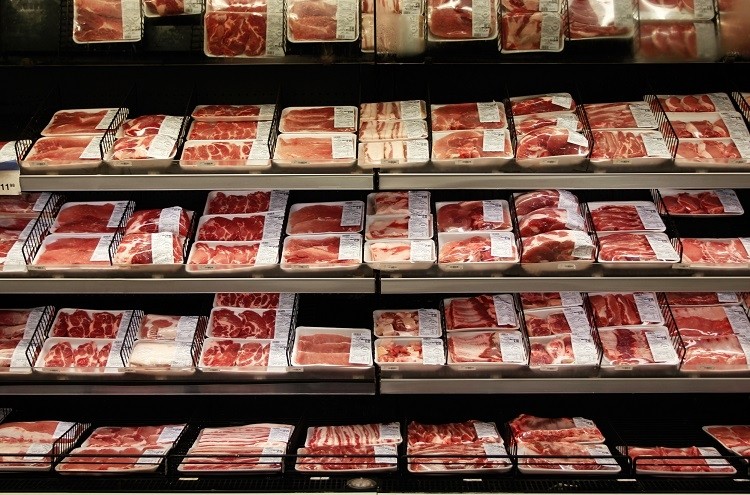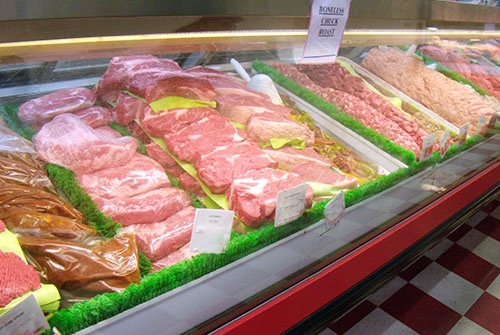Uncover the Art of the Butcher's Cut in a Modern Meat Market
In the ever-evolving landscape of modern-day meat markets, the butcher's cut has transcended its typical origins, merging age-old workmanship with modern methods. What truly establishes the contemporary butcher apart is their capacity to forge a much deeper connection in between consumers and the beginnings of their meat.
Evolution of Butchery Strategies

The mid-20th century saw butchery strategies better improved by clinical insights into muscular tissue biology and meat aging, boosting both inflammation and taste. Innovations like vacuum cleaner product packaging and refrigeration prolonged product shelf-life, permitting butchers to branch out offerings and improve quality control. This duration likewise marked the surge of specific equipment, such as band saws and meat slicers, which raised precision and efficiency in meat handling.
Electronic systems now assist in tracking pet provenance and enhancing cuts to meet details client choices. Additionally, a rebirth in artisanal butchery has actually emerged, mixing traditional abilities with contemporary expertise to cater to customers seeking moral and sustainable meat choices.

Understanding Meat Cuts

Comprehending the details of meat cuts is crucial for both butchers and consumers seeking quality and value. For butchers, specific cuts show skill and regard for the craft, making certain very little waste and optimum return.
The key categories of meat cuts consist of primitive, sub-primal, and retail cuts. Butchers then damage these down further into sub-primal cuts, prior to finally creating retail cuts readily available to consumers, like ribeye or tenderloin.
Recognizing muscle structure is essential; muscular tissues used much more regularly by the pet tend to be harder and are best matched for slow cooking techniques, while less-used muscular tissues, like those found in the loin, are much more tender and perfect for cooking or roasting. Familiarity with these distinctions equips customers to make informed choices, improving their cooking undertakings.
Choosing High Quality Meat
Selecting the ideal meat includes more than just picking a visually appealing piece from the display. The art of selecting top quality meat calls for a critical eye and expertise of certain qualities that symbolize quality and excellence. Firstly, take notice of the color; beef needs to have an intense, cherry-red tone, while lamb must display a soft pink tone, and pork a pale pink. This suggests the meat is fresh and hasn't been exposed to oxygen for also lengthy.
Secondly, consider the marbling, which describes the white flecks of fat within the muscular tissue. Appropriate marbling is a key indication of tenderness and taste, as it melts during food preparation, enhancing the meat's juiciness. Bear in mind, higher marbling often associates with premium top quality cuts, such as USDA Prime.
Texture is an additional important element; why not try here meat needs to feel strong to the touch, not slimy or overly soft. Furthermore, bear in mind the fragrance. Fresh meat should have a clean, neutral scent, totally free from any sour or off-putting smells.
Matching Cuts With Food Preparation Methods
Effectively combining cuts of meat with the ideal food preparation methods is important for accomplishing ideal taste and structure. These techniques improve the meat's all-natural tastes and make certain a juicy coating.
Conversely, harder cuts like brisket and chuck roast are abundant in collagen, which damages down right into jelly when prepared gradually. These cuts are suitable for braising or sluggish roasting, enabling the meat to tenderize in time and establish deep, complicated flavors. Similarly, cuts such as short ribs and pork shoulder prosper with click for more info slow-cooking methods, where expanded cooking times change their durable structures into succulent dishes.
Lamb shanks and oxtail, which call for extended cooking to tenderize, are perfect prospects for cooking or sluggish simmering. These methods coax out abundant, passionate flavors while maintaining dampness. By recognizing the special attributes of each cut, chefs and home chefs alike can boost their culinary creations, guaranteeing each recipe is both pleasing a knockout post and unforgettable.
The Butcher's Role Today
Browsing the progressing landscape of the modern meat market, the butcher's duty today prolongs beyond mere preparation of cuts. Contemporary butchers are cooking artisans, instructors, and advocates for lasting practices.
Along with crafting accurate cuts, butchers currently involve directly with consumers, providing cooking advice and tailoring options to suit specific requirements and choices. Their proficiency in meat aging, marbling, and flavor accounts equips consumers to make educated choices, improving their cooking experiences. This customized solution exhibits the butcher's developing duty as a trusted advisor in the kitchen area.
In addition, butchers are crucial in minimizing waste, using whole pets to create varied items such as sausages and supplies - bagley farms meat market edwardsville il. This comprehensive method not just values the pet but also aligns with contemporary sustainability goals. In this method, the modern-day butcher personifies both tradition and innovation, adapting to an ever-changing market while protecting the creativity and stability of their craft

Final Thought
The contemporary butcher's craft delicately weaves standard techniques with modern-day advancements, highlighting lasting methods and ethical sourcing. Proficiency in comprehending diverse meat cuts and top quality indicators encourages butchers to supply informed referrals, lining up specific cuts with optimum cooking approaches. This know-how not only boosts cooking experiences however additionally enhances the connection in between consumers and the beginnings of their food. By recognizing historical techniques while embracing modern demands, the butcher's function remains crucial in today's sophisticated meat market.
Comments on “Bagley Farms Meat Market Edwardsville IL: Your Go-To Destination for Regional Meat Choice”